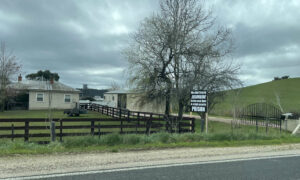MIKE BOLAN
Now that two of the Managed Investment Scheme (MIS) promoted by governments have gone into receivership, leaving tens of thousands of investors impoverished and the forestry industry richer with billions of the investors’ dollars, it seems reasonable to explore what our governments are doing to us.
By looking at flows of money, we can reach conclusions about purposes since governments create and maintain those flows.
In the forestry MIS case, there were 3 major input streams of funding, two of them from taxpayers and the third from ‘investors’ hoping to make a profit from putting money into the schemes. The recipients of the money were forestry and MIS industry groups.
Money stream 1) from taxpayers is the total of all of the various subsidies and favours provided by government to the forestry industry such as road and bridge repair, diesel fuel rebates and cash ‘grants’. This is the multipart government subsidy that allows the industry to operate in its current form which is not according to market needs but subsidised to artificially inflate its profitability.
Money stream 2) came from a tax incentive provided to ‘investors’ that allowed them to claim 100% of money they’d ‘invested’ against their tax bill for that year. With income tax rates at about 30% that worked out at about $3,200 per hectare of trees.
Money stream 3) came from investors paying up to $10,000 per hectare for trees to be placed on land owned by the MIS scheme operator. The land itself was often obtained by the MIS operator by using the upfront payments of new ‘investors’ to purchase new tracts of land.
Now that 2 of the biggest MIS operators have collapsed, the ‘investors’ have lost their money and many are saddled with debts that they were encouraged into to ‘maximise’ their investment.
In simplified form, here’s how it all operated. We’ll look at a case where a taxpayer seeks advice to reduce a tax bill of $40,000.
Step 1) Their ‘impartial’ accountant/advisor, (who can earn 10% commission from MIS schemes sales) shows them that they can pay no tax at all that year if they put up $140,000 into an MIS scheme. They have to put up all of the money in that fiscal year so it’s easiest to borrow the full amount. (No problem, the accountant/advisor can earn another commission on the loan).
30% of $140,000 is $42,000 so they’ll qualify for a tax deduction of $42,000. In other words they’ll pay no tax and end up with about 14 ha of tree plantation as an asset.
Step 2) The money is passed to the MIS operators (minus commissions to the impartial financial advisor) who pass it onto forestry industry operators (minus management fees etc).
Step 3) Because the schemes do not operate according to the free market (tax driven instead of demand driven), the schemes create a glut of trees and prices drop. Falling asset values and rising costs put pressure on MIS operators who finally declare bankruptcy and companies close their doors.
http://blogs.crikey.com.au/northern/2009/05/19/if-an-mis-fell-in-the-forestthe-timbercorp-great-southern-industry-of-greed-in-the-nt/: Investor owns nothing, owes $100,000 to finance company, is threatened by ATO to potentially return $40,000 tax deduction. Advisors drive home in new Beemer, MIS company execs live in new mansion in Toorak while forestry companies retain their ‘earnings’ and cast around for new ‘schemes’ to create more income for themselves.
Here’s an idea – let’s go round again
Instead of admitting the merry go round of error and hyperbole that has impoverished so many investors, our governments are avoiding responsibility for the mess and getting us ready for a dose of ‘more of the same’.
The problems created by tree schemes have been described by rural commentators and scientists as:
artificially causing shifts of land use into trees that result in significant losses of productive food producing land area
major losses of water into catchments as trees require over 2Ml/ha/yr water over and above normal agricultural uses (1 million ha trees takes 2 million million litres of water per year)
forcing governments to focus on subsidised industries rather than on making infrastructures and policies that help all industries, including successful industries.
Recent reports of a new forestry industry ‘review’ panel are ominous as the ‘panel’ is made up of industry, government and unions yet appears to contain no hydrologists, no independent scientists only industry ‘experts’, and no community members.
One way to understand what is happening is to explore the nature of subsidy and government in Australia.
Nature of subsidised industries
In general, successful businesses don’t go to governments seeking a hand out. It is the companies that are having problems that seek government assistance.
Among the problems that lead to ‘needing’ taxpayer handouts are bad management, poor business practices, low productivity, outmoded products and services and waste.
Once companies get into a real jam, Australian governments are a good target for them to access some ‘easy money’, ie. money that they don’t have to earn.
Putting on the bite
Getting money from government is made much easier when the supplicant business can claim to:-
provide lots of jobs (because they imply votes),
contribute significantly to the economy,
influence lots of votes (e.g. via a compliant Union)
support the party in power (preferably on evidence of donations),
provide an ‘essential’ product or service.
Of course, all of this is easier if the supplicant is ‘connected’ to the party via influential people.
Such characteristics make it easier for government to argue that a subsidy is justifiable.
Growing steps
The first ‘bite’ at the cherry need only be modest – ‘just a few million to tide us over’. Once the first subsidy is paid, the government will have to justify the payment, preferably by pointing to successful outcomes of some kind. This is all helped by the supplicant company being keen to provide the arguments necessary to protect their government contacts. As a consequence of these requirements, the voice of the supplicant company within the government increases as does its influence.
As a consequence, relations with government become closer and it becomes progressively easier to justify further payments -‘even more jobs’, ‘greater stability’, ‘support in your electorate’, ‘overcome new uncertainties’, ‘make economy more robust’ and ‘correct balance of payments’.
If subsidies are maintained over a longer period, then government departments and other structures can be set up that are dedicated to the supplicant industries or grouping thereof. ABARE is one example of this kind of phenomenon. Once relations between the government and industry are sufficiently close, then ‘study groups’ comprising mainly industry and government, can be established at taxpayer expense to ‘encourage investment’ or ‘stimulate the industry’.
Politicians can be offered career paths in the relevant industry on the basis of their ‘enlightened support’ and be invited to international conferences or on international visits.
The voices of successful companies that don’t need government support can easily become muted, even ignored, as governments pay other people’s money (ours) to their industry ‘friends’.
Let’s get cozy
The relationship between the government and the industry now resembles a cozy and corrupt ‘one hand washes the other’ arrangement, but not to the government.
Governments, particularly those who are business novices, are anxious to believe the corporate messages about ‘trickle down success’ and ‘economic growth’. It’s just so easy for politicians to point to big business and argue that, because it’s big, it must be successful – particularly as the politician wants to believe that they’ll look successful too just by association.
Unions, who used to represent the workforce, are now starting to work with business to help get government favours. This is especially so in industries that are totally unecessary (e.g. gambling) and those that are outmoded (e.g. smoke based industries). These types of feel threatened by change and it is easier to elicit the support of workers who can imagine their jobs disappearing without that support.
So now we have a triangle of support – subsidised business, unions and government, each taking progressively more taxpayer funds for their own purposes under an umbrella argument of creating economic and social good.
So what?
Australian government is taking money from taxpayers and giving it to companies, many of them controlled by overseas interests.
In the MIS case, 1 million ha of trees (1/3 of Howard’s Plantation Vision 2020 target) cost about $10 billion to put into the ground ($10,000/ha) of which $3.2 bn was a direct cost to taxpayers.
There’re 11 million taxpayers in Australia (give or take) so $1 billion in subsidies costs each of those taxpayers $90 each per year. The MIS debacle cost taxpayers around $270 each to cover our land in trees, convert food farms into tree plantations, drain thousands of Gl of water from catchments, and impoverish tens of thousands of small investors.
Money well spent according to the forestry industry.
In his Quarry vision paper, Guy Pearse reports that ‘the taxpayer provides some $9 billion annually in energy and transport subsidies’ which works out to $810 per year per taxpayer.
Overall, taxpayers are paying thousands of dollars per year to various companies operating in Australia. Those funds are going to our least effective companies and are probably sorely missed by many taxpayers.
Should taxpayers be subsidising companies to the tune of thousands of dollars per year, or would they prefer to retain those thousands of dollars and decide for themselves which companies to give it to?
Pity there’s no debate on this.
Watch this space.
Mike Bolan
http://www.abetteraustralia.com/
Mike is a complex systems consultant, change facilitator and executive/management coach.

























don davey
June 21, 2009 at 20:29
(1)
I liked that Carl ! short and to the point ! hope you don’t mind me using the “crux” of it for my weekly “fang” to about 25 papers around the country and the P.M.s office.
ciao,
d.d.